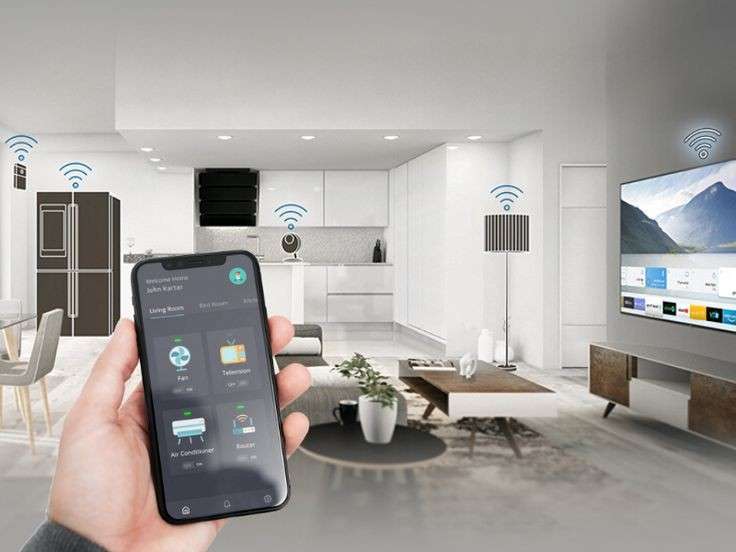When it comes to designing the heart of your home, the kitchen, one of the most important decisions you’ll face is whether to go with a modern or traditional design. Each style offers unique advantages and reflects different lifestyles, preferences, and aesthetics. Whether you’re renovating your current kitchen or designing a brand-new one, understanding the difference between modern and traditional kitchens can help you make an informed decision.
At Scale & Structure, we specialize in creating kitchens that reflect your personality and meet your needs. In this blog, we’ll explore the key features of both modern and traditional kitchens to help you choose the one that’s right for you.

What Defines a Modern Kitchen?
Modern kitchens are all about sleek lines, cutting-edge technology, and minimalist design. This style embraces the “less is more” philosophy, with an emphasis on function, simplicity, and clean aesthetics.
Key Features of a Modern Kitchen:
- Sleek and Minimalistic Design: Modern kitchens are known for their clean lines, simple shapes, and minimal decoration. Cabinets often have flat-front panels with no visible handles, creating a smooth, uniform look.
- Use of Contemporary Materials: Modern kitchens often feature materials like stainless steel, glass, concrete, and engineered stone. These materials are durable, easy to maintain, and contribute to the sleek and polished look of the space.
- Open and Spacious Layout: Modern kitchens often incorporate open shelving, open-plan layouts, and large islands. This helps create a more spacious, airy feel and encourages socializing while cooking.
- Smart Technology and Appliances: Modern kitchens often feature high-tech appliances, such as smart refrigerators, induction cooktops, and touchless faucets, that streamline cooking and improve functionality.
- Neutral Color Palette: The color scheme in modern kitchens typically focuses on neutral tones—whites, blacks, grays, and muted metallics. These colors provide a sleek, sophisticated look and allow the other elements in the room, such as art or lighting fixtures, to stand out.
Scale & Structure Tip: If you value functionality, technology, and clean aesthetics, a modern kitchen may be the right choice for you. It’s ideal for those who love minimalism and want a kitchen that feels both contemporary and efficient.
What Defines a Traditional Kitchen?
Traditional kitchens, on the other hand, focus on warmth, charm, and detailed craftsmanship. This style draws inspiration from classic designs, featuring elegant touches and timeless materials that evoke a sense of comfort and nostalgia.
Key Features of a Traditional Kitchen:
- Classic Design Elements: Traditional kitchens often include ornate details such as decorative moldings, raised-panel cabinets, and intricate woodwork. These features create a sense of richness and sophistication.
- Rich, Natural Materials: Traditional kitchens often showcase wood cabinetry in rich tones, such as cherry, oak, or walnut. Marble countertops, brick backsplashes, and copper fixtures add to the classic aesthetic.
- Warm, Inviting Atmosphere: Traditional kitchens prioritize creating a cozy, welcoming environment. Soft lighting, warm wood tones, and vintage accessories contribute to a homely, relaxed atmosphere.
- Detailed Cabinetry and Hardware: Unlike the sleek, handle-less cabinets of a modern kitchen, traditional kitchens often feature detailed, carved cabinets with intricate hardware like brass or antique-style handles and knobs.
- Colorful or Earthy Palettes: Traditional kitchens tend to have more color, often incorporating earthy tones like deep reds, greens, and browns, as well as soft whites and creams. These colors create a warm, inviting feel and complement the natural materials used in the space.
Scale & Structure Tip: If you love warmth, timeless charm, and classic detailing, a traditional kitchen will make your home feel inviting and elegant. It’s perfect for those who appreciate craftsmanship and love a more ornate style.
Modern vs Traditional: Which Kitchen is Right for You?
Choosing between a modern and traditional kitchen comes down to personal taste, lifestyle, and the overall aesthetic you want for your home. Here are some questions to consider when deciding which style is the best fit for you:
1. What is Your Desired Aesthetic?
- Modern Kitchen: If you prefer sleek, clean lines, minimalist design, and a high-tech environment, a modern kitchen may be the way to go. This style is perfect for individuals who enjoy a contemporary aesthetic and prioritize functionality.
- Traditional Kitchen: If you prefer warmth, comfort, and timeless elegance, a traditional kitchen is ideal. This style brings a sense of coziness and homeliness to your space, with classic design elements and rich materials.
2. How Much Space Do You Have?
- Modern Kitchen: Modern kitchens work well in open spaces and smaller, more compact areas. The use of open shelving and minimalist design can make even small kitchens feel more spacious.
- Traditional Kitchen: Traditional kitchens are often better suited for larger spaces. The detailed cabinetry and rich materials can sometimes overwhelm smaller rooms, but in larger kitchens, they create a luxurious and inviting atmosphere.
3. Do You Enjoy Cooking and Entertaining?
- Modern Kitchen: If you enjoy hosting and cooking, a modern kitchen’s spacious island, state-of-the-art appliances, and open layout will allow you to move around freely while entertaining guests. It’s also perfect for incorporating smart technology to streamline the cooking process.
- Traditional Kitchen: If your kitchen is the heart of your home where family gathers, a traditional kitchen will create a cozy, welcoming atmosphere for both cooking and entertaining. Its warmth and charm make it an inviting space for gathering with loved ones.
4. What is Your Maintenance Preference?
- Modern Kitchen: Modern kitchens are often easier to maintain due to their sleek finishes and contemporary materials. Stainless steel, engineered stone, and smooth surfaces require minimal upkeep.
- Traditional Kitchen: Traditional kitchens may require more upkeep, particularly with wooden cabinetry, intricate detailing, and natural stone countertops. These materials often need periodic maintenance to retain their beauty.
5. What is Your Budget?
- Modern Kitchen: Modern kitchens can be budget-friendly if you opt for simpler materials, such as laminate countertops and standard cabinetry. However, top-of-the-line appliances and custom finishes can make modern kitchens more expensive.
- Traditional Kitchen: Traditional kitchens tend to be more costly due to the use of high-quality, natural materials such as custom wood cabinetry, marble countertops, and detailed hardware. If you want to create a truly classic look, be prepared to invest in quality craftsmanship.
How to Merge Modern and Traditional Styles
If you’re struggling to choose between modern and traditional, it’s also possible to blend both styles to create a balanced kitchen that reflects your unique taste. Here are a few tips to combine elements of both:
- Mix and Match Materials: Combine sleek, modern countertops with classic wooden cabinetry or incorporate modern fixtures into a more traditional-style kitchen.
- Contrasting Color Palettes: Pair a traditional warm wood finish with modern black or white cabinetry for a striking contrast that blends both styles.
- Layer with Accessories: Use modern lighting or minimalist accessories in a traditionally styled kitchen for an updated touch, or introduce vintage elements into a modern kitchen to add charm.



